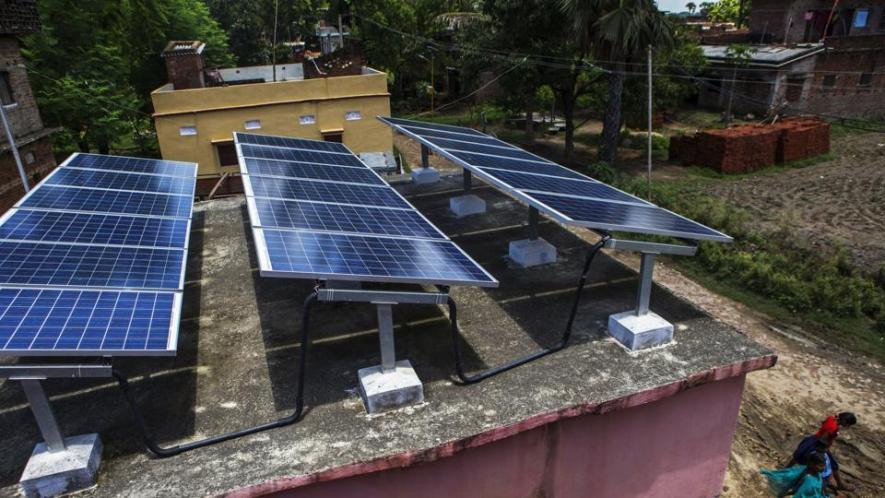India’s Investment in Renewable Resources Not Enough

Image for representational purpose only. Courtesy: Hindustan Times
India’s national climate action plans, known in UN parlance as nationally determined contributions (NDCs), under the Paris Agreement set three major goals – to increase the share of non-fossil fuels to 40% of the total electricity generation capacity, to reduce the emission intensity of the economy by 33% to 25% by 2030 from the 2005 level, and to create additional carbon sink of 2.5-3 billion tonnes of carbon dioxide equivalent through additional forest cover.
According to the government, India is well on the trajectory to achieve two of its three commitments under the Paris Agreement ahead of the 2030 deadline. However, the Economic Survey 2018-2019 pointed out, “India still needs investment in renewable energy of more than US$ 250 billion over the next decade.” This implies that an annual investment of more than Rs 1.77 lakh crore ($25 billion) every year for 10 years.
In the 2019-2020 budget announced on July 5, 2019, the allocation for the Ministry of New and Renewable Energy was Rs 12,353.81 crore ($1.745 billion), which is a shocking 93% less than the target amount. “How can India aim to cut emissions by 2030 when government support is in favour of coal?” asked Nandikesh Sivalingam, programme manager, Greenpeace East Asia, talking to IndiaSpend. He added, public sector enterprises (PSEs) such as NTPC and Coal India also have investments in renewable energy, but these are not on a scale comparable to the coal sector.
The total budgetary allocation for PSEs engaged in the generation of thermal power – National Thermal Power Corporation (NTPC), Coal India, Neyveli Lignite Corporation, and Singareni Collieries – in the union budget of the current fiscal year is around Rs 40,000 crore.
In the 2015 Paris Climate Agreement, India had made a commitment to install 175 gigawatt (GW) of renewable power capacity by 2022. This installation would have reduced India’s dependence on fossil fuels and helped the country’s fight against air pollution, which was responsible for 12.4 lakh deaths in India in 2017.
Even though there was a record growth in renewable power capacity installation until 2017, this growth slowed down in 2018, due to several reasons – an anti-dumping duty imposed by the government on imported solar modules to aid domestic manufacturing, higher rates of taxation under the goods and services tax (GST), and unclear policy, reported IndiaSpend.
As of May 2019, 22% of India’s total installed capacity for energy generation comprised of renewable sources, while 63.2% of the capacity comprised of coal, lignite, gas and oil. In the year 2018, India emitted 2,299 million tonnes of carbon dioxide, a 4.8% increase from the year 2017.
India’s commitments under the United Nations Framework Convention on Climate Change (UNFCCC) do not talk about coal. It only talks about renewable energy capacities and reductions in emissions, which are a function of greening the energy mix, setting energy efficiency targets and so on. India’s transition is a unique process, where even though there is a rising share of renewables, the thermal capacity is also increased every year.
The Indian government needs to put in public money into research and development of new technologies, not just in renewable energy but also into associated services like energy storage. The research and development activities in India often do not receive the required attention because the country keeps focusing on applications of technologies.
Get the latest reports & analysis with people's perspective on Protests, movements & deep analytical videos, discussions of the current affairs in your Telegram app. Subscribe to NewsClick's Telegram channel & get Real-Time updates on stories, as they get published on our website.
























